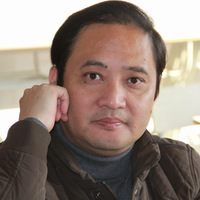Qiang Zha
York University, Education, Faculty Member
Higher education has now become a real part of the globalization process: the cross-border matching of supply and demand. Consequently, higher education can no longer be viewed in a strictly national context. This calls for a broader... more
Higher education has now become a real part of the globalization process: the cross-border matching of supply and demand. Consequently, higher education can no longer be viewed in a strictly national context. This calls for a broader definition of ...
Research Interests:
China’s key science and technology universities are modelled on the French École Polytechnique. As such, they are utilitarian institutions, rooted in the concept of cultivating manpower for society’s economic progress, and tending to... more
China’s key science and technology universities are modelled on the French École Polytechnique. As such, they are utilitarian institutions, rooted in the concept of cultivating manpower for society’s economic progress, and tending to ignore the development of the individual. As China’s elite higher education system took in a rapidly increasing number of students in the recent massification process, China’s key science and technology universities underwent reform to become more comprehensive in curricular offerings and more research-oriented in function. The authors have uncovered an interesting phenomenon: Despite repeated discussion in academic circles, this transformation was never actually a conscious strategic choice for universities. Only when the Chinese government launched a program of higher education “massification” did universities develop their own unique reform strategies in a move to become more comprehensive and more research oriented. The authors have adopted a multi-stream analysis framework to describe and analyze three case study universities: University of Science and Technology of China (USTC), Huazhong University of Science and Technology (HUST), and Northwest Agriculture and Forestry University (NWAFU). It was found that Chinese universities already have quite a high level of autonomy, but that the government still has the power to make strategic decisions. Each university’s decision-making mechanism has been an independent process within the constraints of the political economic structure over this period, and policy-making has combined top-down and bottom-up processes.
Research Interests:
ABSTRACT Competition for scarce resources causes institutions to become more similar because the uniform environmental conditions of competition bring forth similar responses. Consequently, there is a convergence of institutional function... more
ABSTRACT Competition for scarce resources causes institutions to become more similar because the uniform environmental conditions of competition bring forth similar responses. Consequently, there is a convergence of institutional function structures elsewhere. National higher education systems worldwide have been moving from a specialized regime towards an integrative regime. During the integration process, a hierarchical order begins to emerge, as organizational integration implies standardization, which measures institutions by one single set of criteria and tends to define them by rank or by the score they obtain compared to other institutions. The integrative regime then moves towards a hierarchical regime. In an integrated hierarchical system, research qualifications are usually the essential condition for access to resources and prestige. This has essentially become a worldwide phenomenon. This study attempts to draw on organizational behaviour theories (in particular the resource dependency, the institutional isomorphism and the neo-institutionalism models), and employs an organizational allomorphism perspective to develop a paradigm that helps explain this process. This approach draws also on the “glonacal agency” heuristic, and emphasizes the centrality of agency and hence the different responses and outcomes it produces in organizational behaviour, structure and pathways to change. It proposes, as a result, that higher education institutions are neither becoming strictly homogeneous and isomorphic at a national or global level, nor highly differentiated and polymorphic at the local-organizational level. They could rather be conceived as variants (not different forms) of the very limited number of institutional archetypes at global level.
Research Interests:
This chapter puts Chinese higher education in the context of modernization and globalization. It identifies particularities in China’s response to these phenomena, with highly developed traditions shaping the modern institutions that... more
This chapter puts Chinese higher education in the context of modernization and globalization. It identifies particularities in China’s response to these phenomena, with highly developed traditions shaping the modern institutions that emerged under the influences of Western capitalism, then of Western socialism, and finally of globalization.We begin with a historical overview, then provide an analysis of recent developments in three major areas: governance and finance, expansion and differentiation, and internationalization and nationalization.
The expansion and diversification of higher education are twin phenomena that have been associated with the development of higher education in many countries around the world. This study attempts to use enrolment expansion as a lens to... more
The expansion and diversification of higher education are twin phenomena that have been associated with the development of higher education in many countries around the world. This study attempts to use enrolment expansion as a lens to examine the effects of governmental intervention and market forces on diversification of the Chinese system, which has gone through the most profound changes of institutional patterns and the largest expansion ever seen in the world higher education community. Forming an analytical framework from the population ecology perspective, the resource dependency perspective and the institutional isomorphism perspective, this study investigates programmatic as well as institutional diversification of a population of 594 Chinese universities at the end of 2001. A result of these changes is the impulse towards more comprehensive patterns of knowledge, with the universities seeking to broaden their curricular coverage. Paralleling this pattern of programmatic convergence, Chinese universities are being structured in a hierarchical way according to functions and goals.
